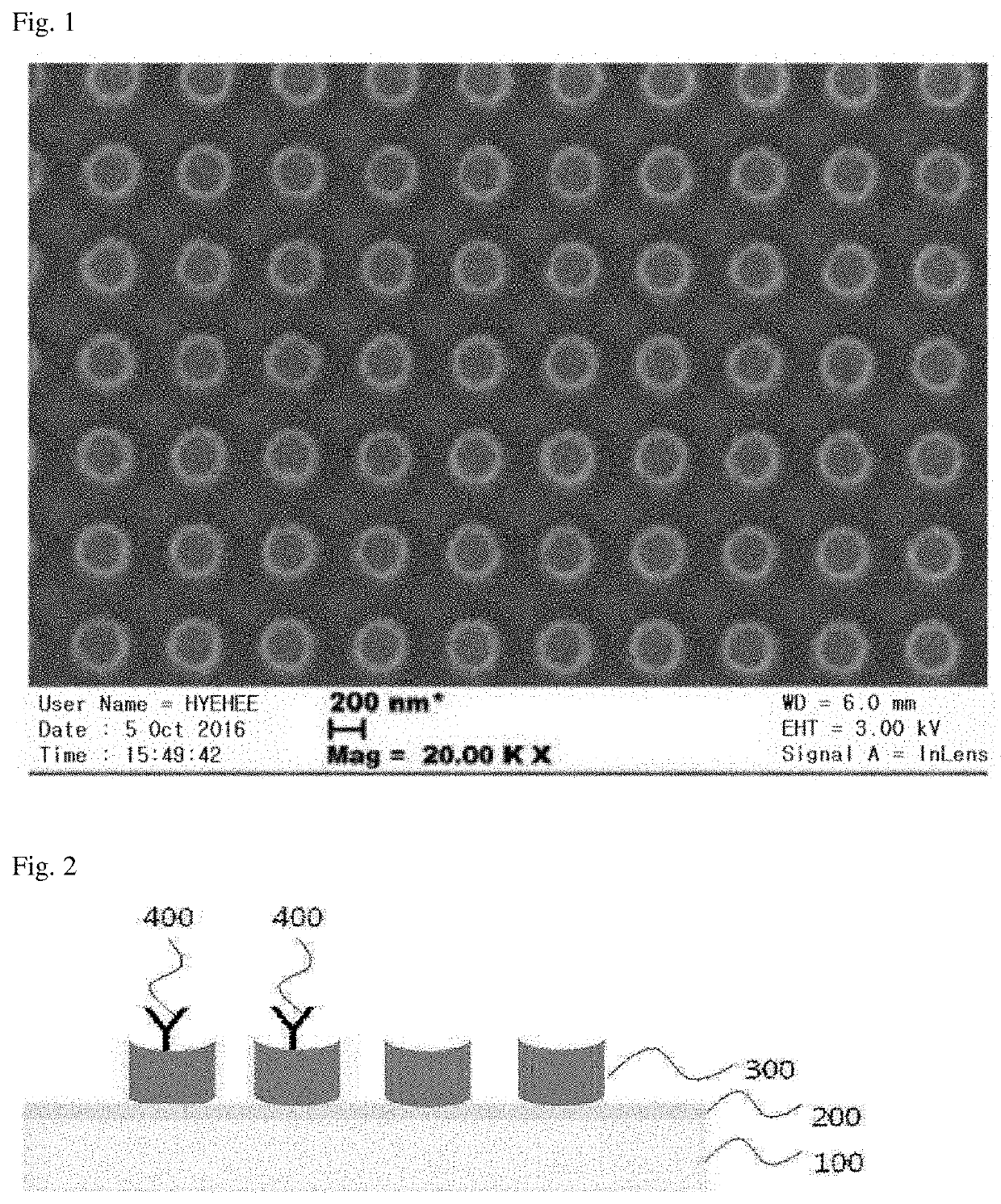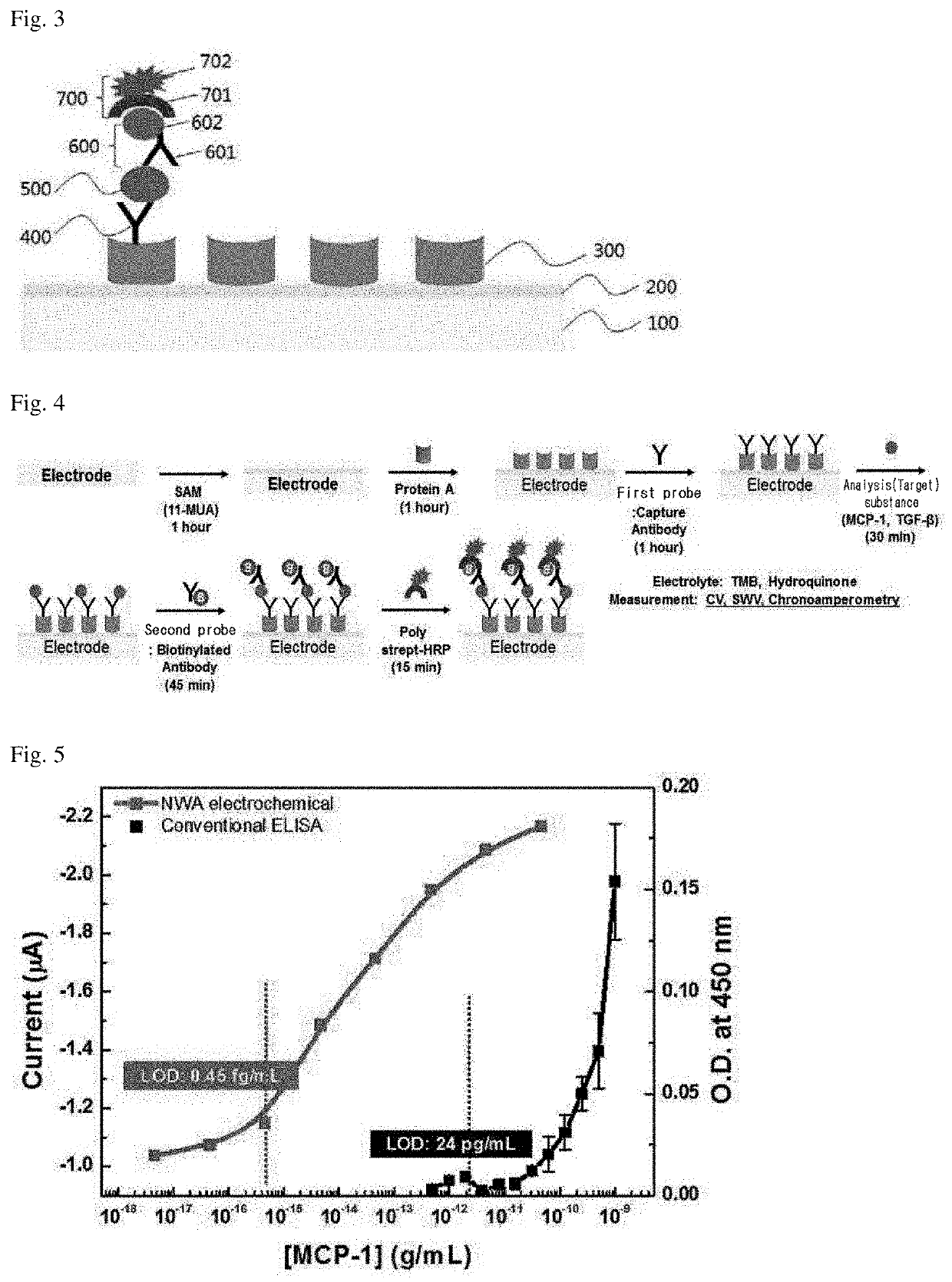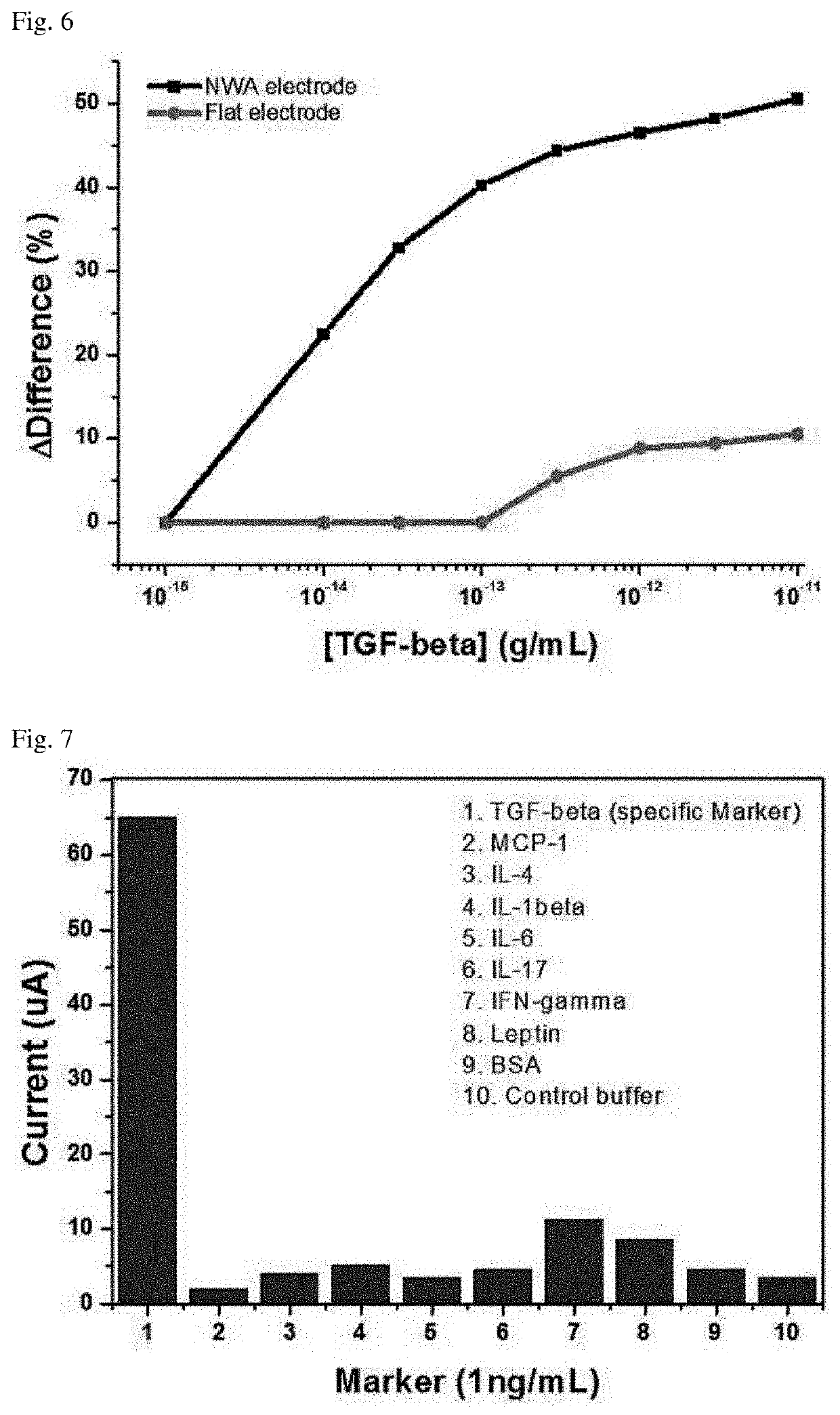Multiwell Electrode-Based Biosensor
- Summary
- Abstract
- Description
- Claims
- Application Information
AI Technical Summary
Benefits of technology
Problems solved by technology
Method used
Image
Examples
embodiments
[0075]Hereinafter, the present invention will be described in greater detail through specific embodiments. The following embodiments are merely examples to help understand the present invention, and the scope of the present invention is not limited thereto.
[Production Example] Manufacture of Biosensor
[0076]Referring to the method for forming nanowells described in Journal of Biotechnology 168, 584-588, 2013, a plurality of nanowells having a diameter of 300 to 400 nm were formed in an array type on a surface of a gold electrode using a laser (see FIG. 1).
[0077]In particular, the electrode was formed in such a way that a silicon oxide film was formed (10 nm) on a 2×4 mm silicon wafer by plasma chemical vapor deposition, and an Au layer, which is a material that conducts electricity well and is a bio-friendly metal, was formed to a thickness of 50 nm by the e-beam evaporation method. In order to form fine nanowells on the Au layer created as such, a lithography method, which is a semi...
experimental example 1
[Experimental Example 1 and Comparative Example 1] Measurement of Target Substance Using Biosensor and Comparison with ELISA Method
[0080]A biosensor in which the first probe and the second probe were prepared using antibodies specific for MCP-1 (purchased from R&D Systems) was used.
[0081]Each of the first probes was bound to each nanowell, and then reacted with 1 mg / ml of BSA for 30 minutes to prevent non-specific binding. Thereafter, MCP-1 protein, which is an antigen corresponding to the antibody of each of the first probes, was placed in each of the well and allowed to react for 30 minutes. Next, it was reacted with the biotinylated second probe for 45 minutes, and reacted with the signal mediator molecule in which HRP was bound to streptavidin for 15 minutes. Thereafter, a TMB solution corresponding to an electrolyte was added, and then the electric current was measured over time, the results of which are shown in FIG. 5. Here, the ELISA method was measured by a known typical me...
PUM
 Login to View More
Login to View More Abstract
Description
Claims
Application Information
 Login to View More
Login to View More - R&D
- Intellectual Property
- Life Sciences
- Materials
- Tech Scout
- Unparalleled Data Quality
- Higher Quality Content
- 60% Fewer Hallucinations
Browse by: Latest US Patents, China's latest patents, Technical Efficacy Thesaurus, Application Domain, Technology Topic, Popular Technical Reports.
© 2025 PatSnap. All rights reserved.Legal|Privacy policy|Modern Slavery Act Transparency Statement|Sitemap|About US| Contact US: help@patsnap.com



